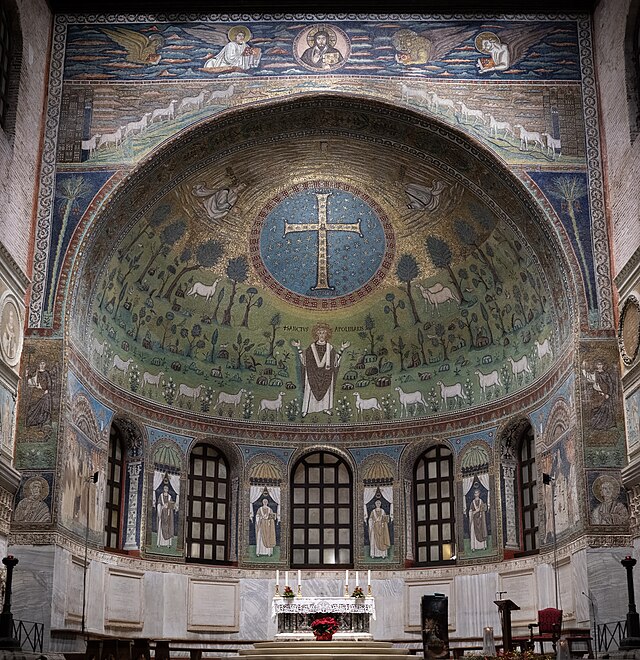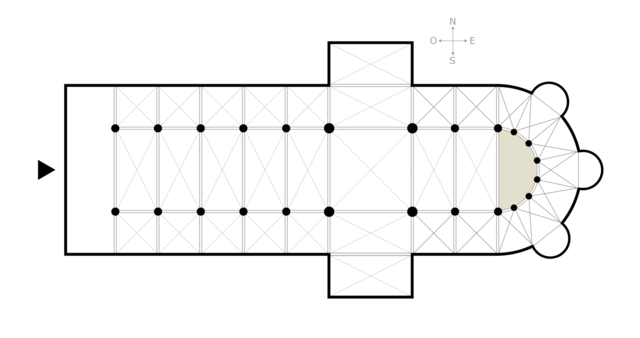Loading AI tools
Semicircular recess covered with a hemispherical vault or semi-dome From Wikipedia, the free encyclopedia
In architecture, an apse (pl.: apses; from Latin absis, 'arch, vault'; from Ancient Greek ἀψίς, apsis, 'arch'; sometimes written apsis; pl.: apsides) is a semicircular recess covered with a hemispherical vault or semi-dome, also known as an exedra. In Byzantine, Romanesque, and Gothic Christian church (including cathedral and abbey) architecture, the term is applied to a semi-circular or polygonal termination of the main building at the liturgical east end (where the altar is), regardless of the shape of the roof, which may be flat, sloping, domed, or hemispherical. Smaller apses are found elsewhere, especially in shrines.[1]


An apse is a semicircular recess, often covered with a hemispherical vault. Commonly, the apse of a church, cathedral or basilica is the semicircular or polygonal termination to the choir or sanctuary, or sometimes at the end of an aisle.
Smaller apses are sometimes built in other parts of the church, especially for reliquaries or shrines of saints.[citation needed]
The domed apse became a standard part of the church plan in the early Christian era.[2]
In the Eastern Orthodox Church tradition, the south apse is known as the diaconicon and the north apse as the prothesis. Various ecclesiastical features of which the apse may form part are drawn together here.
The chancel (or sanctuary), directly to the east beyond the choir, contains the high altar, where there is one (compare communion table). This area is reserved for the clergy, and was therefore formerly called the "presbytery", from Greek presbuteros, "elder", [citation needed] or in older and Catholic usage "priest".[3]
Semi-circular choirs, first developed in the East, which came into use in France in 470.[4] By the onset of the 13th century, they had been augmented with radiating apse chapels outside the choir aisle, the entire structure of apse, choir and radiating chapels coming to be known as the chevet (French, "headpiece").[5]
Seamless Wikipedia browsing. On steroids.
Every time you click a link to Wikipedia, Wiktionary or Wikiquote in your browser's search results, it will show the modern Wikiwand interface.
Wikiwand extension is a five stars, simple, with minimum permission required to keep your browsing private, safe and transparent.